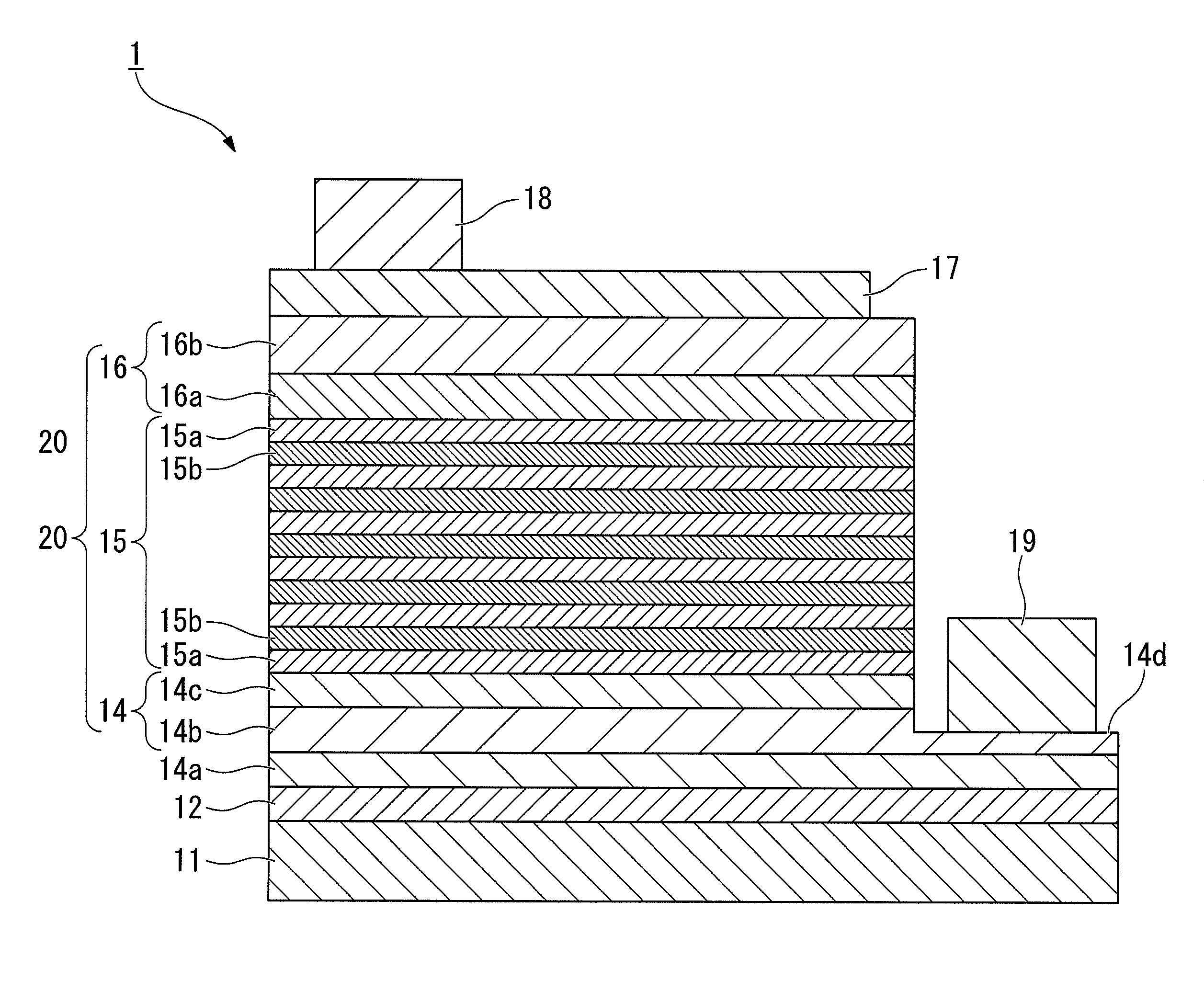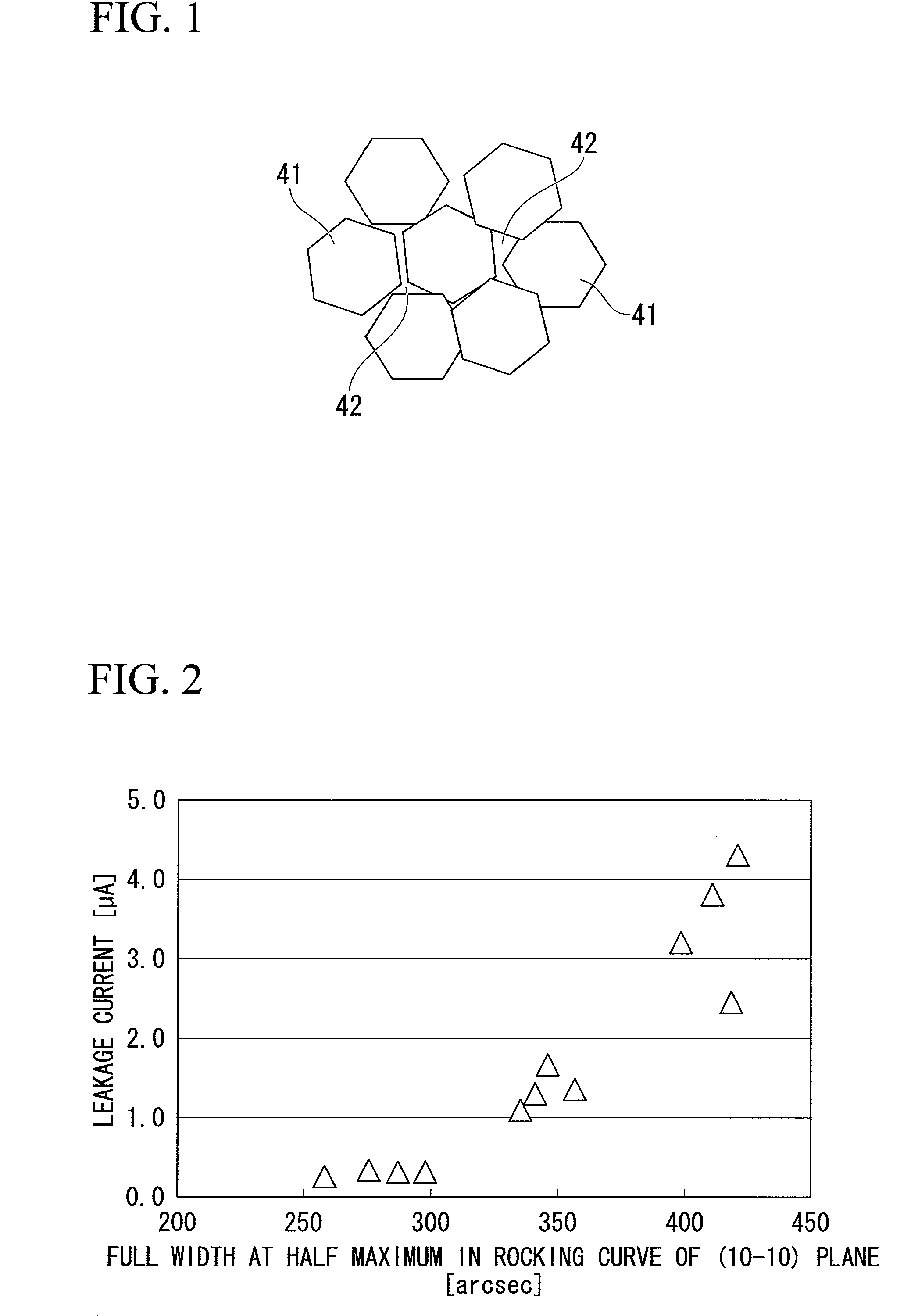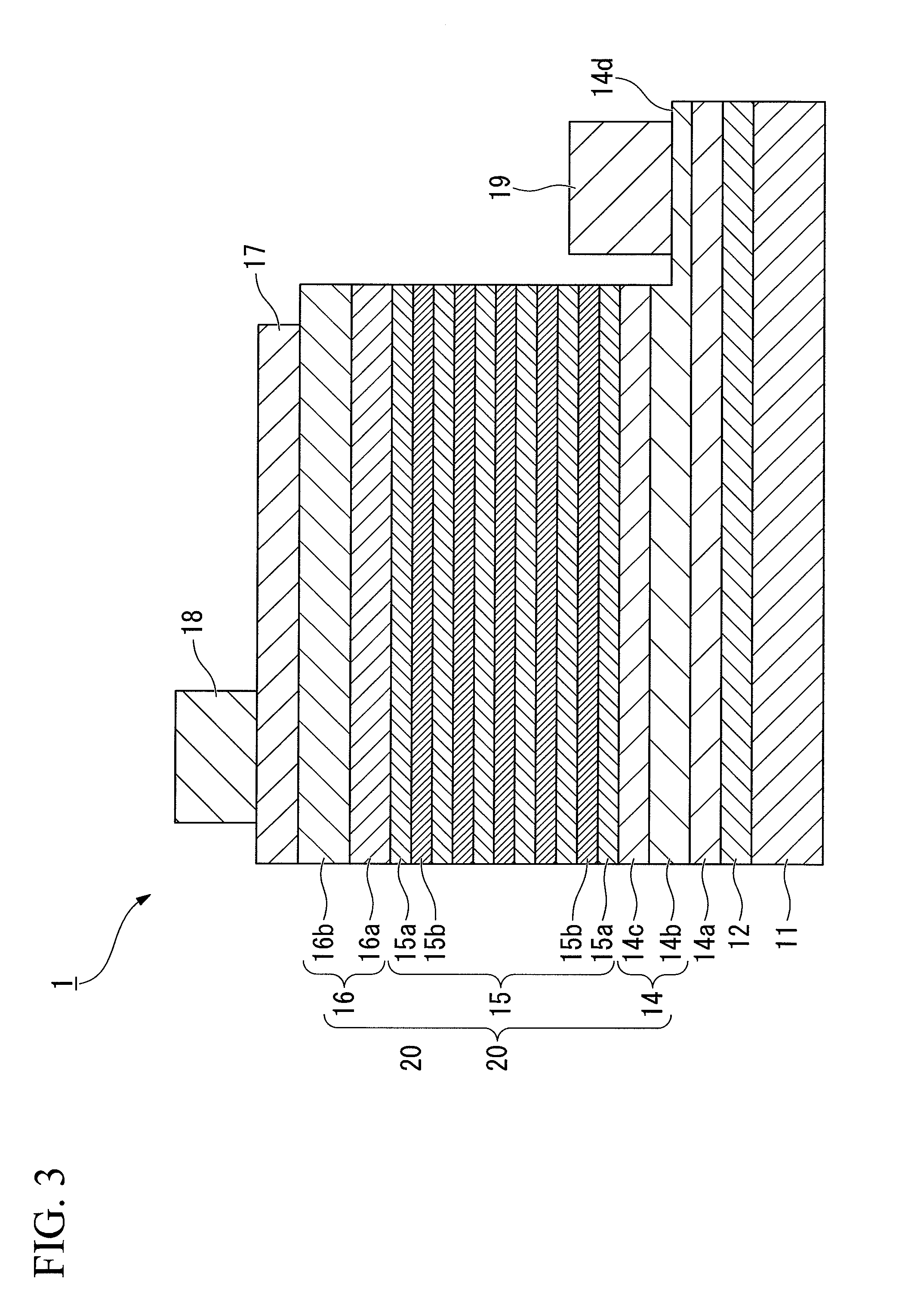Group-iii nitride compound semiconductor device and production method thereof, group-iii nitride compound semiconductor light-emitting device and production method thereof, and lamp
a technology of compound semiconductors and light-emitting devices, which is applied in the direction of semiconductor lasers, vacuum evaporation coatings, coatings, etc., can solve the problems of reducing the light-emitting efficiency of light-emitting devices, reducing the level of threading dislocation within the base layer, and reducing the emission intensity. , the effect of excellent uniformity
- Summary
- Abstract
- Description
- Claims
- Application Information
AI Technical Summary
Benefits of technology
Problems solved by technology
Method used
Image
Examples
example 1
[0159]A layer formed of AlN was formed as an intermediate layer on the c-plane of a sapphire substrate using a RF sputtering method, and a layer formed of GaN was then formed as a base layer on top of the intermediate layer using a MOCVD method.
[0160]A c-plane sapphire substrate was placed in a sputtering apparatus, the substrate was heated to 500° C. inside the chamber of the apparatus, and nitrogen gas was introduced into the chamber at a flow rate of 15 sccm. Subsequently, with the pressure inside the chamber held at 1 Pa, a 500 W high-frequency bias was applied to the substrate side, and the surface of the substrate was cleaned by exposure to nitrogen plasma.
[0161]Subsequently, argon gas and nitrogen gas were introduced into the chamber, and the substrate temperature was set to 500° C. High-frequency power of 2,000 W was then applied to the target side, and with the pressure inside the chamber held at 0.5 Pa and under conditions including an argon gas flow rate of 5 sccm and a n...
example 2
[0165]In Example 2, with the exception of altering the conditions during cleaning of the substrate surface and the conditions during formation of the intermediate layer, an intermediate layer and a base layer were formed on a substrate in the same manner as Example 1.
[0166]A c-plane sapphire substrate was placed in a sputtering apparatus, the substrate was heated to 750° C. inside the chamber of the apparatus, and nitrogen gas was introduced into the chamber at a flow rate of 15 sccm. Subsequently, with the pressure inside the chamber held at 0.08 Pa, a 500 W high-frequency bias was applied to the substrate side, and the surface of the substrate was cleaned by exposure to a nitrogen plasma.
[0167]Subsequently, argon gas and nitrogen gas were introduced into the chamber, and the substrate temperature was cooled to 500° C. High-frequency power of 2,000 W was then applied to the target side, and with the pressure inside the chamber held at 0.5 Pa and under conditions including an argon ...
example 3
[0179]As Example 3, a light-emitting device 1 similar to that shown in FIG. 3 and FIG. 4 (refer also to the laminated semiconductor 10 of FIG. 5) was prepared, and a lamp 3 (a light-emitting diode: LED) similar to that shown in FIG. 6 that used the light-emitting device 1 was then prepared.
[0180]In this example, first, a RF sputtering method was used to form a single crystal layer formed of AlN as an intermediate layer 12 on the c-plane of a substrate 11 composed of sapphire, and a MOCVD method was then used to form a layer formed of GaN (a group-III nitride compound semiconductor) as a base layer 14a on top of the intermediate layer 12. Each of the other layers was then laminated onto the substrate.
[0181]First, a substrate 11 formed of a 2-inch diameter (0001) c-plane sapphire that had been polished to a mirror surface was placed inside a chamber. A high-frequency sputtering apparatus was used, and a target formed of metallic Al was used as the target.
[0182]The substrate 11 was hea...
PUM
| Property | Measurement | Unit |
|---|---|---|
| full width at half maximum | aaaaa | aaaaa |
| semiconductor | aaaaa | aaaaa |
| emission spectrum | aaaaa | aaaaa |
Abstract
Description
Claims
Application Information
 Login to View More
Login to View More - R&D
- Intellectual Property
- Life Sciences
- Materials
- Tech Scout
- Unparalleled Data Quality
- Higher Quality Content
- 60% Fewer Hallucinations
Browse by: Latest US Patents, China's latest patents, Technical Efficacy Thesaurus, Application Domain, Technology Topic, Popular Technical Reports.
© 2025 PatSnap. All rights reserved.Legal|Privacy policy|Modern Slavery Act Transparency Statement|Sitemap|About US| Contact US: help@patsnap.com



